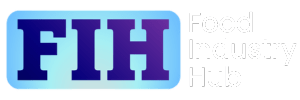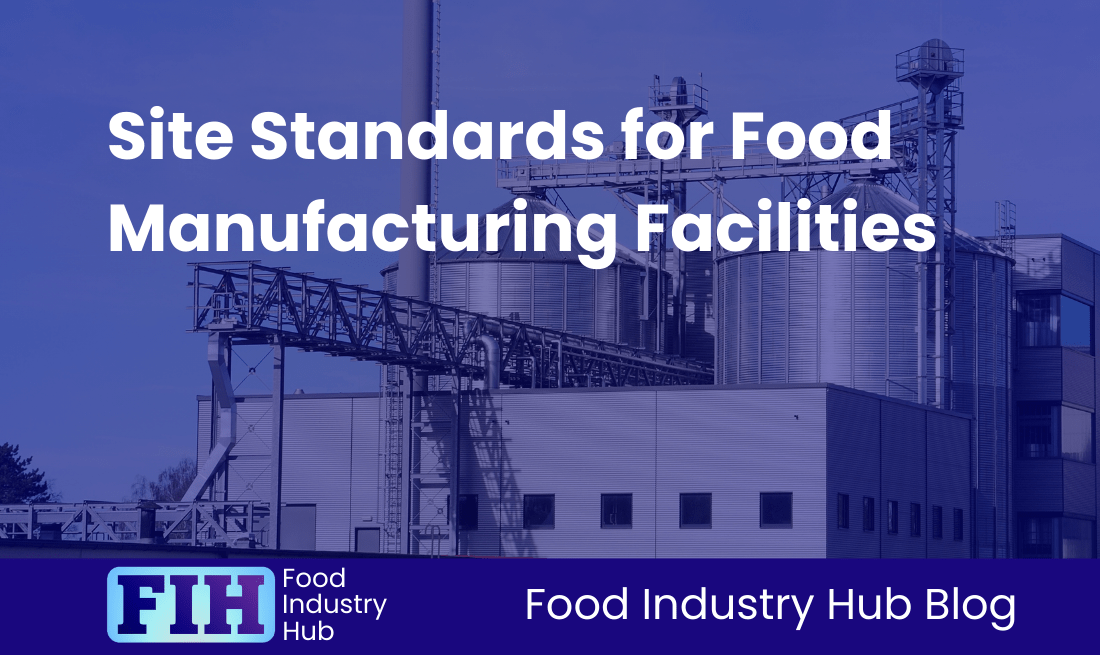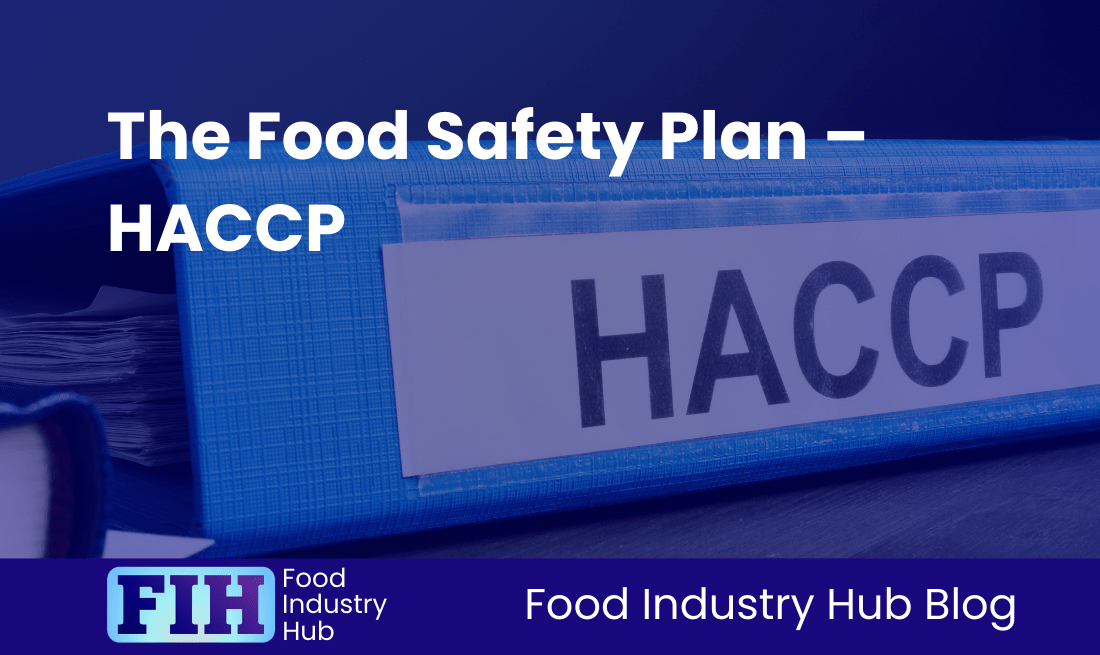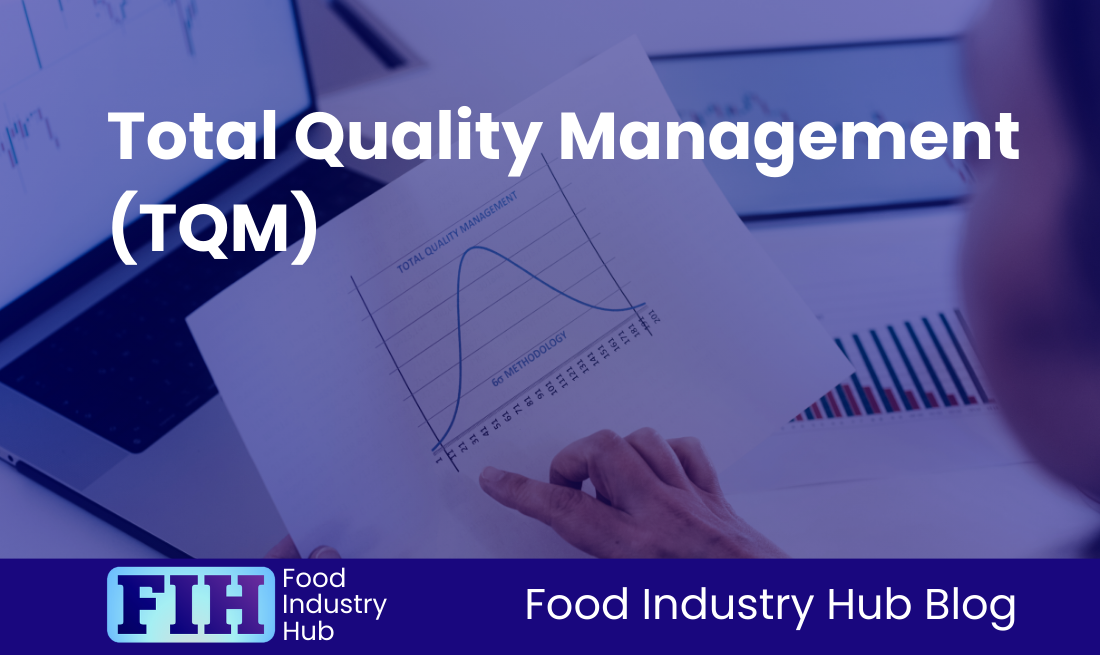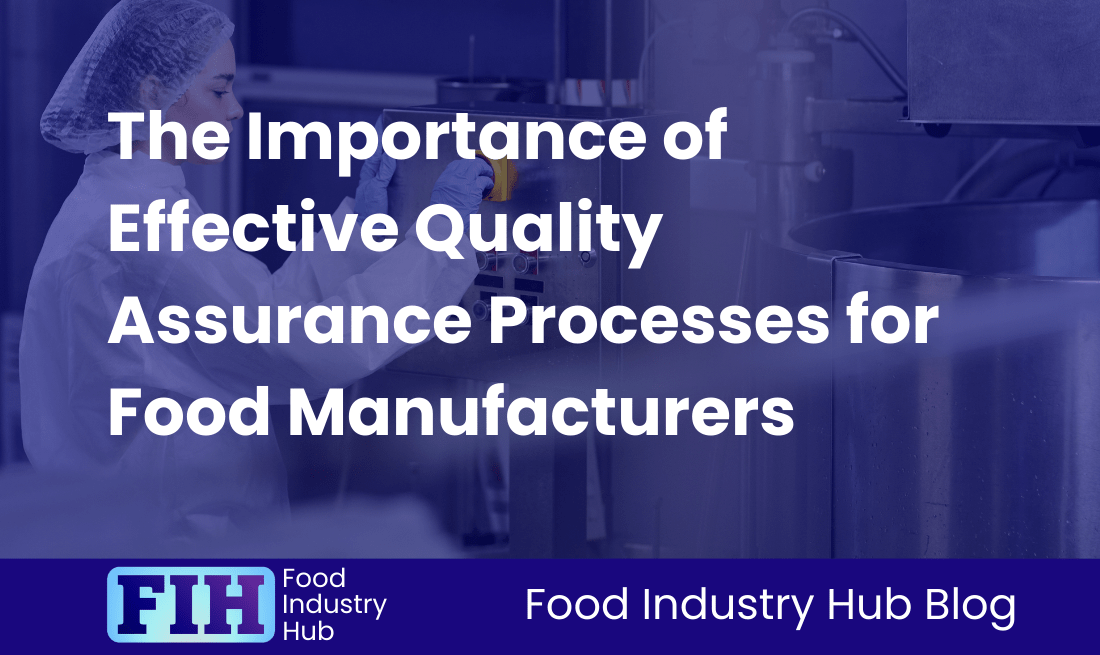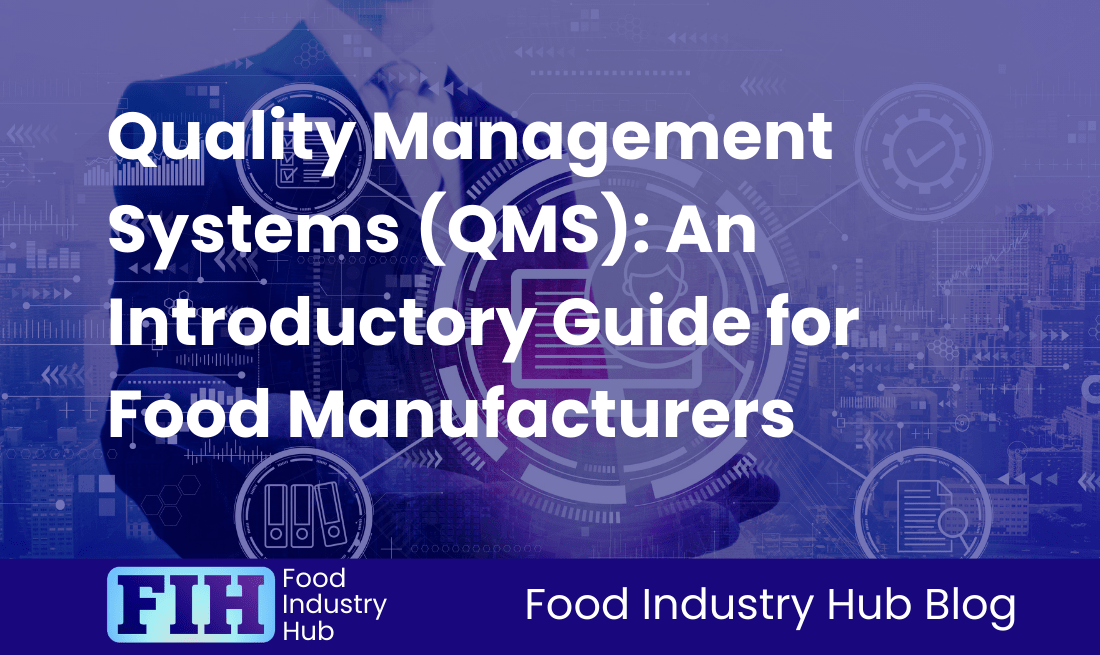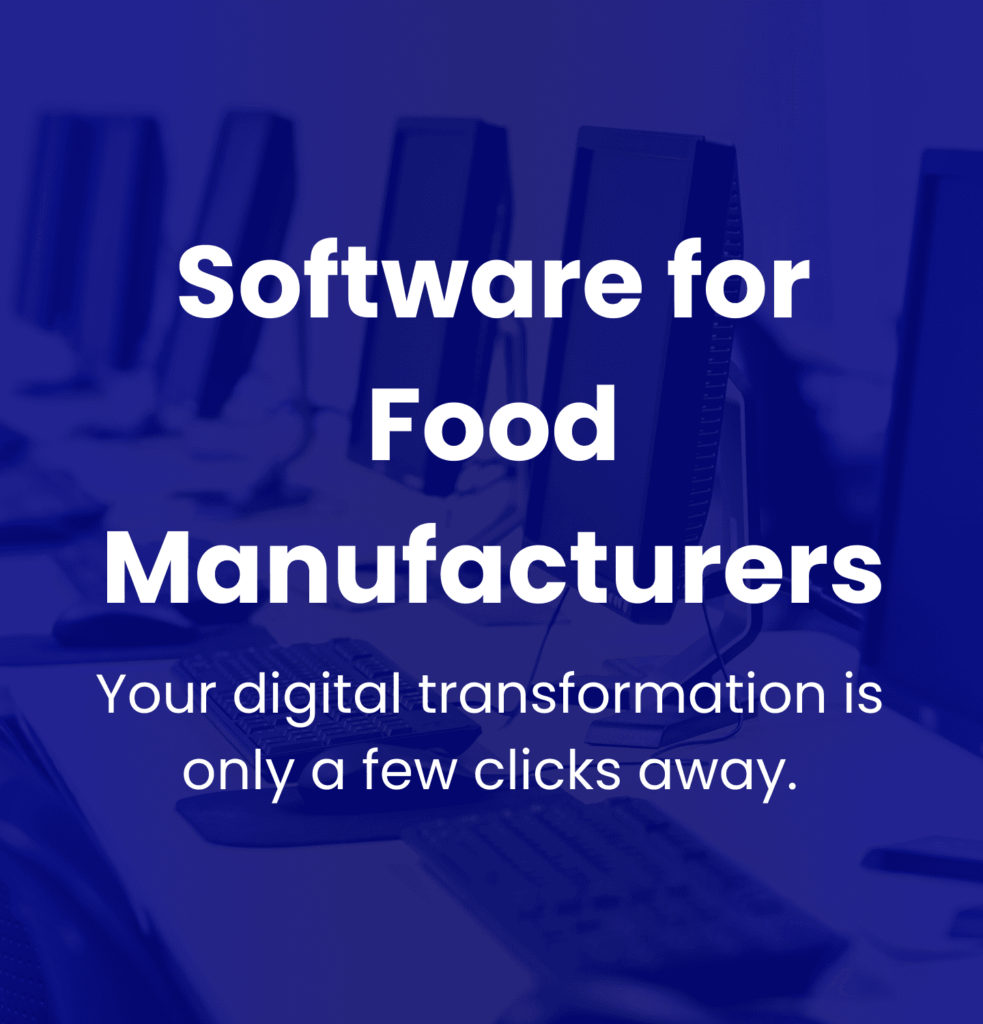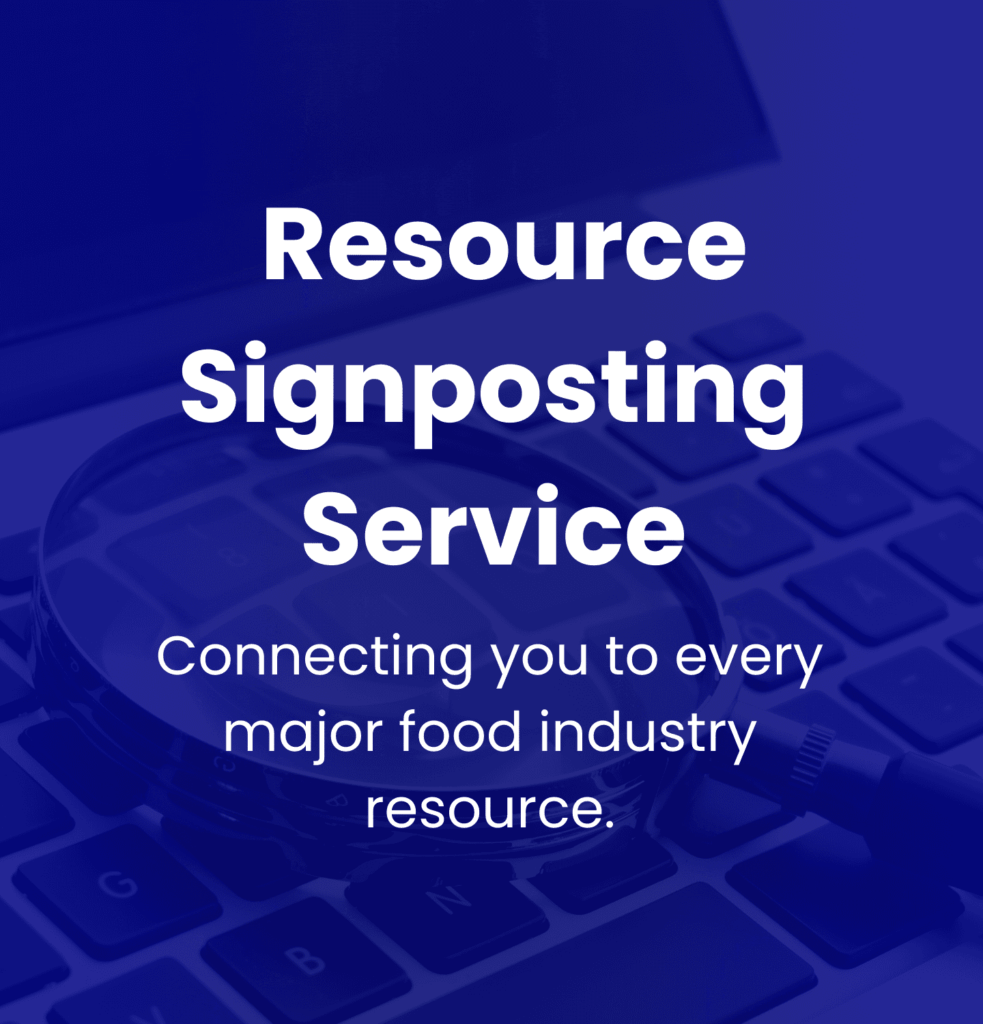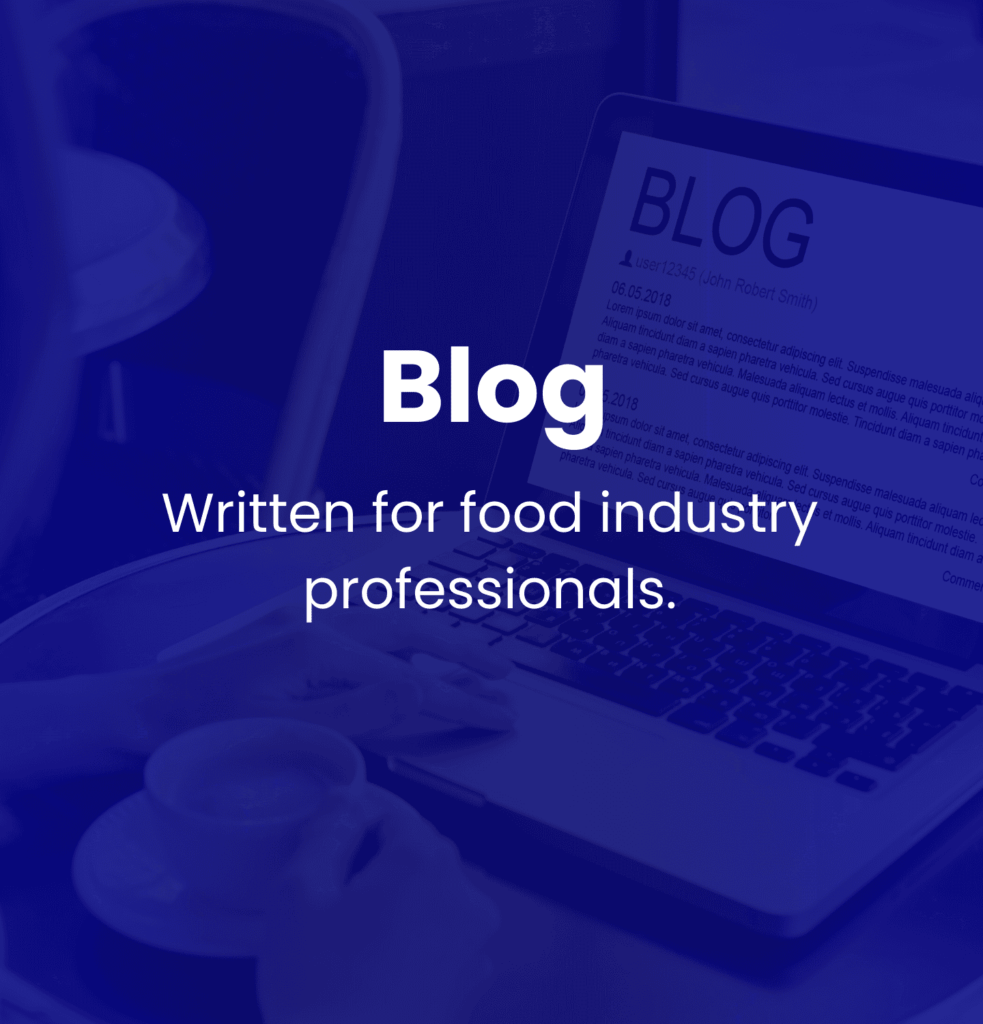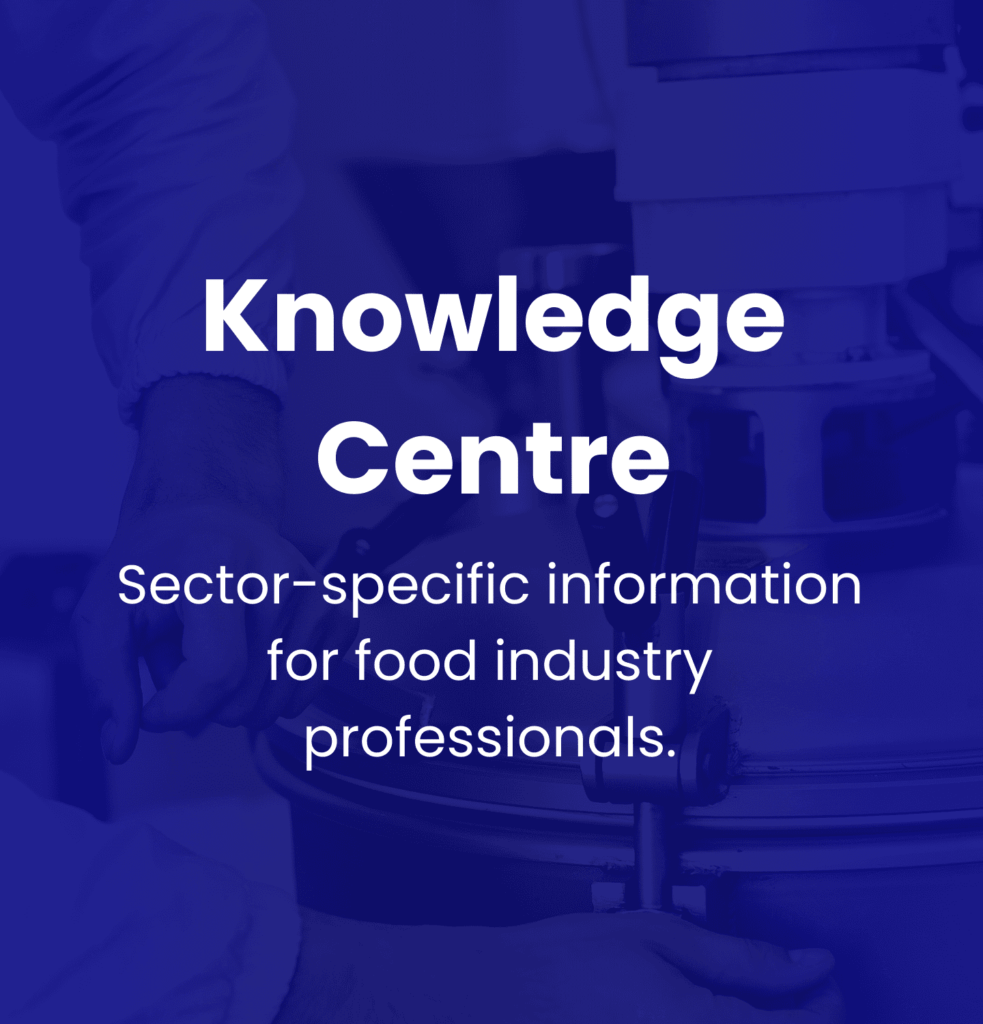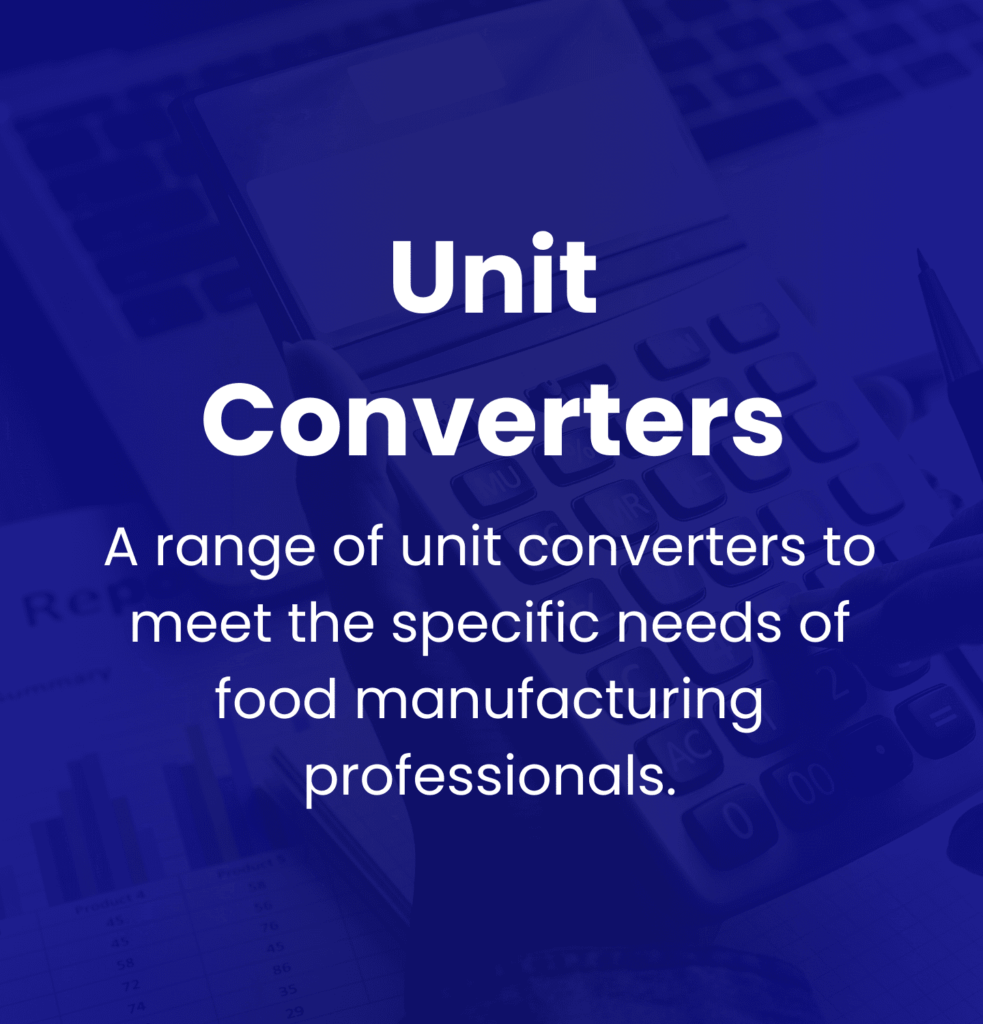Know: Pest Control
Contents
Introduction
Key Takeaways
Integrated Pest Management (IPM) Frameworks
Regulatory Compliance & Legal Obligations
Prevention & Exclusion Tactics
Pest Control Methods & Technologies
Organisational Culture & Staff Training
Risk Assessment & Continuous Monitoring in Pest Control
Global & Regional Considerations in Pest Control Practices
Emerging Trends & Innovations in Pest Control
Conclusion
Introduction
In food manufacturing, pest control goes beyond maintaining cleanliness; it is indeed a determining factor that impacts product quality and consumer safety. Pests, inclusive of rodents, insects, and birds, largely jeopardise food safety due to their capability to infect products with dangerous pathogens. Pest infestations can consequently lead to foodborne illnesses and considerable financial setbacks, underlining the necessity for solid pest management strategies.
Pest Management Methods
Pest control covers a vast number of practices that focus on preventing infestations and upholding the integrity of food products. It utilises diverse techniques designed to monitor, mitigate, and control pests, underlined by proactive measures such as Integrated Pest Management (IPM). This substantial approach works to rectify existing pest issues and also seeks to diminish the conditions that engender pest proliferation.
Importance of Pest Control in Food Safety and Quality
The requirement for effective pest control is inextricably linked with food safety and quality standards. The presence of pests can lead to product spoilage and contamination, thus undermining both consumer trust and business reputation. Enterprises that place significance on pest management not only upgrade their safety practices but also adhere to industry regulations, thereby defending their operations against legal and financial risks.
Integrated Pest Management (IPM)
Integrated Pest Management (IPM) embodies a central strategy towards managing pest activities. IPM accentuates a unified approach that merges several methods of pest removal and control, often involving an alliance with pest management professionals. With a focus on prevention and sustainable practices, IPM decreases chemical dependency and consequently lessens the environmental footprint.
Prevention and Exclusion Techniques
Prevention and exclusion measures act as the first line of defence in pest management. Implementing strategies such as sealing entry points, upholding rigorous hygiene protocols, and executing regular inspections holds a central role in diminishing the likelihood of infestations.
Role of Organisational Culture and Training
Organisational culture and training form an integral part of maintaining pest-free environments. Cultivating a culture of vigilance and cleanliness amongst staff not only improves compliance with pest management strategies but also enables all employees to contribute actively towards retaining a pest-free facility.
Risk Assessment and Constant Monitoring
Consistent monitoring and risk assessment are necessary for adjusting pest control strategies according to evolving situations. Regular evaluation of pest activity and potential entry points assists in making immediate modifications to control measures.
Regional and Global Considerations in Pest Control Practices
Pest control practices may significantly vary based on regional factors such as climate, pest species, and local regulations. Modifying pest management strategies to accommodate these regional variances is pivotal for achieving efficacious results.
Emerging Trends and Innovations in Pest Control
The emergence of trends and innovations in pest control, including the adoption of AI and biological control methods, mirrors a continuous commitment towards more sustainable practices within the industry. By embracing new advancements, food manufacturers can ameliorate their pest management efforts while decreasing environmental impacts.
Pest control in the food manufacturing industry is a complex endeavour that involves IPM, regulatory compliance, prevention tactics, advanced technologies, organisational training, risk assessment, regional considerations, and emerging trends—all working together to ensure the safety and quality of food products.
Key Takeaways
Integral Role of Integrated Pest Management (IPM)
Integrated Pest Management (IPM) is a comprehensive approach instrumental for the effective control of pest populations. Contrary to conventional methods, IPM prioritises preventive actions by addressing the root causes of infestations, such as the removal of food, water, and shelter sources required for pests. This proactive strategy involves regular reviews and monitoring, paired with suitable control tactics, which altogether reduce the dependence on chemical solutions and encourage eco-friendly protocols.
Prevention and Exclusion Tactics
Prevention and exclusion strategies are key in creating pest-free environments. Measures such as closing potential entry points, maintaining hygiene, and effective waste disposal shift the focus from reactive solutions towards proactive prevention, proving more cost-effective in the long term.
Advancements in Pest Control Methods & Technologies
The sector is witnessing progression in pest control means and technologies. Advances like digital inspection systems enable real-time monitoring and recording of pest activities, while biological control methods provide sustainable alternatives to traditional pesticides. Improved data analytics aid in more sophisticated decision-making, predicting pest patterns and refining response strategies.
Value of Staff Training & Organisational Culture
The importance of employee training and establishing an organisational culture that prioritises pest management cannot be discounted. Assuring all staff members understand their roles in keeping pest-free environments enhances cleanliness and strengthens IPM practices throughout the facility. Collaborating with pest control contractors further helps the successful execution of exhaustive pest management strategies, cultivating a culture of responsibility and transparency.
Food Industry Hub Management Systems can significantly boost the effectiveness of your food safety and quality management system, leading to improved confidence and elevated quality assurance throughout your operations.
Integrated Pest Management (IPM) Frameworks
Integrated Pest Management (IPM) is a comprehensive methodology centred around a systems approach for tackling pest control in food manufacturing. It combines biological, cultural, mechanical, and chemical methods to address this challenge. The primary aim of IPM is to reduce threats to food safety, human health, and the environment while concurrently preventing pest infestations, which could undermine the integrity and safety of products [Source: Food Safety Magazine]. The broad-based nature of IPM contributes to its effectiveness by encouraging proactive steps rather than purely reactive measures, a common characteristic in traditional pest control methods.
Comparison of IPM Frameworks with Traditional Pest Control Strategies
Traditional pest control approaches are largely dependent on the use of chemicals for eradication. This can result in presistent problems such as pesticide resistance and environmental contamination. These methods tend to offer a limited, short-term solution, often failing to address the root causes of pest issues. Conversely, IPM encourages a more sustainable, forward-thinking framework that includes modifying habitats and strategic monitoring to pre-empt pest infestations [Source: IAOM]. The integration of exclusion, sanitation, and habitat management methods within IPM helps reduce reliance on pesticides and supports a safer environment for food production and employee well-being.
Role of Preventive Strategies in IPM
In food manufacturing environments, preventive strategies significantly contribute to the effectiveness of an IPM programme.
Multi-Layered Exclusion Strategies: These involve the implementation of physical barriers such as screens, door sweeps, and the sealing of potential entry points, vastly reducing pest infiltration from the outdoors [Source: Pesticide Action Network].
Landscape Management Practices: By adjusting the surrounding environment to deter pest inhabitation, these practices complement IPM. They involve managing vegetation, facilitating correct drainage, and preserving cleanliness around the facilities to prevent habitats that attract pests [Source: PMG Engineering]. These strategies consequently reduce the need for reactive pest control and enhance the general state of the production area, aligning with key industry standards such as HACCP and GMP.
Importance of Judicious Pesticide Use in IPM
Thoughtful use of pesticides is significant to the effectiveness and safety of an IPM framework. This involves strictly adhering to pre-set action thresholds that signal the necessity for intervention when pest populations reach a certain level, thereby avoiding gratuitous pesticide application [Source: Oregon State University]. Pesticides ought to be applied in a targeted manner, utilising the least harmful options and taking care to minimise hazards to organisms not intended as targets, thus preserving ecological harmony. This careful approach helps diminish the likelihood of developing pesticide resistance among pest populations and supports environmental protection, aligning with contemporary sustainability aims.
Important Terminology Associated with IPM
Comprehending key terminology is crucial to facilitate effective communication and implementation of IPM strategies in food manufacturing:
- Action Threshold: This refers to the extent of pest presence that necessitates adopting pest control measures to avoid unacceptable damage.
- Economic Threshold: This is the infestation level at which the cost of pest control equates to the economic loss incurred due to the pests.
- Biological Control: This strategy involves the use of natural enemies, such as predators or parasites, to regulate pest populations.
- Agricultural Practices: Agricultural techniques optimise conditions for crop production while discouraging pest populations. They include crop rotation and sanitation measures.
- Physical Control: Techniqes that alter the physical environment to deter or eliminate pests, such as installing barriers or ensuring proper sanitation [Source: UAEX].
Through the integration of these concepts, IPM frameworks viably manage pest populations while ensuring compliance with food safety standards and improving the operational environment in food manufacturing facilities.
Regulatory Compliance & Legal Obligations
Interpreting Specific UK Pest Control Regulations Including the Food Safety Act 1990
In the UK, the primary governing regulation for pest control within the food manufacturing sector is the Food Safety Act 1990. The act imposes a broad expectation on food business operators to guarantee that food is safe for consumption, free from any pest-contributed contamination. Under this act, it’s mandatory for operators to maintain cleanliness in food production surroundings and execute efficient pest control mechanisms. Regular evaluations and recorded actions to any pest detections are vital for demonstrating compliance and maintaining food safety standards in the supply chain.
These regulations are supplemented by the Control of Pesticides Regulations 1986. This legislation dictates that only endorsed pesticide products can be utilised within food facilities, necessitating detailed record keeping and the involvement of certified professionals for safe handling and application [Source: Safeguard Pest Control]. Additional legislation like the Food Standards Act 1999, which instituted the Food Standards Agency (FSA), accentuates the importance of upholding food hygiene standards, thereby strengthening requirements for pest control within food manufacturing processes [Source: Rentokil].
The British Pest Control Association (BPCA) plays a significant role in this context, promoting Integrated Pest Management (IPM) practices. The BPCA endorses regular tracking and documentation of pest activities, thus endorsing compliance with the established pest control protocols.
Comparison Between EU and US Regulatory Frameworks With Respect to Pest Control
The regulatory structures steering pest control within food manufacturing display significant variations across Europe and the United States, affecting operational practices across a wider scope. In Europe, the EU Food Hygiene Regulation (Regulation (EC) No 852/2004) obliges food businesses to adopt measures for preventing pest contamination, emphasising stringent hygiene protocols and pest management systems. The prevention strategy is incorporated as part of the Hazard Analysis and Critical Control Points (HACCP) standards. Even after Brexit, many UK-based food businesses continue to comply with these rigorous European standards to assure quality and safety of food products.
In contrast, the Food and Drug Administration (FDA) in the United States regulates under the Code of Federal Regulations (CFR) Title 21. These guidelines emphasise facility design, operational maintenance and strict pest control measures as part of Good Manufacturing Practices (GMPs), underscoring the need to create pest-resistant environments. The regulatory framework in the US also includes elective safety certifications outlined by the Global Food Safety Initiative (GFSI), propelling food manufacturers to adopt inclusive pest management practices aligned with global safety standards.
Global Supply Chain Implications for Pest Management Practices
Effective management of pests becomes increasingly significant within the global food supply chain, given the variance in local and international regulations. The implications necessitate food manufacturers to comply with diverse pest management regulations across varying markets to ensure product safety and transparency throughout the supply chain. Failure to enforce rigorous pest control measures can lead to substantial risk factors, including health hazards from contaminated food products, costly recalls and severe damage to brand reputation.
International standards like ISO 22000 mandate the establishments of food safety management systems, integrating pest control into comprehensive risk management frameworks. This integration facilitates compliance with multiple regulatory landscapes and also enhances operational resilience. The growing complexity of global supply chains entail thorough documentation of pest control practices to guarantee compliance with safety regulations at each stage of food production and distribution. It thereby ensures public health and maintains consumer trust in food products.
By adhering strictly to established regulations and safeguarding practices, food manufacturers can effectively mitigate risks associated with pests, ensuring quality and safety throughout the global food supply chain.
Sign-up for the Food Industry Hub Mail Service
We regularly produce new content for food industry professionals, and the Food Industry Hub Mail Service is the best way to stay up to date with the latest additions.
Signup today to be added to the Food Industry Hub mailing list.
Prevention & Exclusion Tactics
Prevention and exclusion tactics are fundamental aspects of effective pest control. These methods aim to obstruct pest entry and establish an environment that is inhospitable for infestations. This is achieved primarily by a combination of physical barriers and meticulous sanitation protocols.
Significance and Execution of Structural Hardening
Structural hardening is an essential component of pest management, centred around modifications that insulate a facility against pests. This includes actions like sealing gaps and crevices in walls, around windows and doors, and wherever utility penetrations exist. These vulnerabilities specifically may invite pests, so the strategic use of food-safe sealants and metal flashing ensures that these potential entry points are off-limits.
Successful structural designs integrate durable, smooth surfaces which prevent food accumulation in hard-to-reach areas, thus reducing the opportunities for pests to seek refuge. Regular inspections are necessary to verify the integrity of physical barriers and ensure that any degradation or breaches are addressed promptly. For instance, routine upkeep of metal kick plates at doors and ensuring the integrity of screens at windows and vents serve a dual purpose. They allow accessibility for personnel while limiting pest movement [Source: Purdue Extension].
Explanation of Effective Sanitation Protocols and Grading Systems
Sanitation protocols play a role in preventing pest infestations by eliminating potential sources of food and water. Implementing a consistent cleaning schedule ensures all surfaces, including production areas, storage spaces and equipment, receive comprehensive sanitation, which limits the risk of pest attraction.
Enhanced sanitation can be achieved through effective waste management strategies, such as using covered bins and ensuring waste is disposed of regularly, which minimises possible pest food sources.
Some facilities apply ranking systems to grade sanitation levels, offering clear standards against which performance can be evaluated. These grading systems may involve quantitative evaluations like microbial testing or qualitative assessments like visual inspections. These help management to identify areas that demand immediate attention.
Influence of Environmental Factors: Temperature and Relative Humidity (RH) Controls
The management of environmental factors, particularly temperature and relative humidity (RH), plays a significant role in pest control strategies within food manufacturing. Most pests flourish between 18°C and 30°C, so maintaining cooler temperatures in storage and production areas has the potential to hinder pest development. Humidity control is similarly important; typically, 60% RH is deemed to be the upper limit for insect activity.
The use of effective ventilation systems and dehumidifiers aids in regulating these environmental conditions, making the environment less appealing to pests and supporting overall compliance with food safety standards.
With a strategic combination of structural hardening, thorough sanitation protocols, and environmental controls, the occurrence of pest infestations in food manufacturing facilities can be significantly reduced. This, in turn, bolsters the compliance with safety and quality standards within the industry.
Pest Control Methods & Technologies
In the food production industry, managing pests can directly impact the quality and safety of the final product. This section explores different methods of pest control and how they can be applied in the food manufacturing sector.
Overview of Biological Control Methods
Biological control plays an essential role in managing pest populations. Biological control is more applicable to ecosystem-scale interventions than at food manufacturing facility level, but it’s useful to have an awareness of this approach. This strategy, considered ecologically friendly, utilises natural enemies like predatory insects, parasitoids, and microorganisms to suppress pest populations. Three primary strategies in this approach are importation, augmentation, and conservation. Importation involves introducing non-native species to control local pests, augmentation increases the impact of native biocontrol agents, and conservation preserves and improves habitats to support natural enemies [Source: Clemson University].
Biological control methods offer multiple benefits to food manufacturers by significantly reducing dependency on chemical pesticides, which can contaminate products. They also counteract the ability of pests to develop resistance against control measures, which has been linked to chemical approaches. Biological control strategies tend to be cost-effective over time, promoting sustainable food production [Source: PubMed].
Role of Smart Monitoring Systems in Pest Management
Smart monitoring systems, utilising advanced technologies like Internet of Things (IoT) devices and sensors, enhance pest management practices. Such systems enable the real-time tracking of pest populations and environmental conditions, leading to proactive detection and prompt response to infestations. For instance, automated traps with cameras and image recognition software can identify pest species and count their numbers accurately, facilitating targeted control interventions.
Smart monitoring systems can be integrated with Integrated Pest Management strategies, enabling comprehensive understanding of pest behaviour, environmental influences, and population dynamics which boost the effectiveness of biological control methods. This holistic approach reduces overall pesticide usage and improves compliance with food safety regulations.
Understanding Resistance Management
Managing resistance is essential for maintaining the effectiveness of pest control methods. Biological control strategies are seen as a safer option since they target specific pests while minimising overall environmental impact. Blending a range of pest management tactics, like alternating different biological control agents and implementing cultural practices, can inhibit pests from rapidly adapting to specific treatments.
Practices such as crop rotation and the use of pest-resistant crop varieties contribute significantly to resistance management. These strategies reduce pest populations and decrease the chances of developing resistance, supporting compliance with food safety and quality standards across the manufacturing process.
Implementation of IoT in Pest Control
IoT technologies offer a more data-driven approach to manage pest populations. For instance, smart traps fitted with IoT devices can monitor environmental conditions and notify staff instantly upon identifying pests, leading to quick responses.
IoT systems enhance resource efficiency, ensuring that biological control measures occur during the most favourable conditions. This level of precision bolsters pest control efforts while aligning with the increasing demand for enhanced food safety standards within the food supply chain.
In conclusion, the synergised use of biological control methods, advanced monitoring technologies, proactive resistance management practices, and IoT integration provides a robust framework for sustainable pest management in the food manufacturing sector. This fusion not only offers efficient pest control solutions but also significantly enhances both food safety and environmental sustainability.
Organisational Culture & Staff Training
In food manufacturing, establishing a firm organisational culture focused on pest management is of considerable importance. It holds significant influence over food safety, quality, and brand reputation. Staff training, structured well, serves as a vital component of this culture, guiding employees on their pest control responsibilities and their broader implications on food safety.
Employee Education and Awareness
Effective training programmes educate employees about common pests, their behaviours, and environments conducive to their survival. Comprehending these aspects enables staff to proactively perceive and report potential pest threats, thereby mitigating the risk of infestations and associated contamination. Equipping employees with such knowledge empowers them as vigilant sentries, responsible for early detection — a factor crucial in averting costly pest issues and failures in food safety audits [Source: Quality Assurance Magazine].
Empowering Employees as the First Line of Defence
Given the impracticality of management and quality assurance teams constantly monitoring every facility corner, trained employees assume a key role in identifying potential pest concerns. They can pinpoint elements like food residues and leaks that may attract pests. This proactive involvement is not just financially pragmatic, but it also preserves product integrity, lowers health risks associated with pest infestations, and upholds compliance with food safety regulations [Source: Food Safety Magazine].
Clear Roles and Responsibilities
Allocating specific pest control duties as part of daily tasks promotes accountability. For example, maintenance personnel can be assigned to inspect and seal potential pest entry points, while warehouse staff can routinely check incoming goods for signs of infestation. This relating of daily operational roles to pest prevention underscores shared responsibility within the workplace.
Importance of Cross-Functional Integrated Pest Management (IPM) Committees
Cross-functional Integrated Pest Management (IPM) committees are essential for devising effective pest control strategies within food manufacturing environments. These committees unify personnel from diverse departments such as quality assurance, maintenance, sanitation, and management, thereby fostering collaborative pest control approaches.
Enhanced Coordination and Communication
The varied expertise within IPM committees streamlines the flow of information and facilitates coordinated action around pest control. Regular meetings and updates ensure that all relevant staff are educated about pest risks, control measures, and are prepped for audits. This team effort outperforms isolated initiatives, allowing for prompt responses to rising pest challenges.
Comprehensive Risk Identification and Ownership
Each department contributes distinct insights into pest management, upholding extensive risk identification that encompasses structural susceptibilities, sanitation failures, and supply chain hazards. This all-encompassing engagement cultivates an ownership culture, where employees at all levels feel invested in pest control measures.
Regulatory Compliance and Audit Preparedness
IPM committees play a key role in ensuring compliance with food safety regulations. Continuous documentation and collaboration exhibited by these committees portray a proactive and methodical approach to pest management, a necessity for acquiring food safety certifications and succeeding in audits.
The Role of Multilingual Training Materials and Whistleblower Protections in Diverse Teams
In a food manufacturing setting that comprises a culturally and linguistically diverse workforce, effective communication through multilingual training materials becomes imperative to an effective pest control strategy.
Multilingual Training Materials
Offering training in multiple languages ensures that all staff members thoroughly understand pest risks, detection methods, and their respective roles in pest management. This reduces potential miscommunication and reinforces adherence to reporting procedures, enabling all staff levels to actively participate in pest control initiatives [Source: Anticimex].
Whistleblower Protections
Putting in place efficient whistleblower protections encourages staff to report pest issues or unsafe practices without fear of retaliation. These safeguards establish a transparency culture wherein personnel feel secure in expressing concerns about pest sightings, enabling prompt interventions that ensure food safety. This policy not only strengthens accountability, but supports proactive problem-solving in pest management.
By integrating comprehensive staff training, cross-functional IPM committees, multilingual resources, and whistleblower protections, food manufacturing companies can create an effective culture focused on pest control. This multifaceted approach not only enhances food safety but also encourages workforce engagement and regulatory compliance within a diverse working environment.
Risk Assessment & Continuous Monitoring in Pest Control
In the food manufacturing sector, risk assessment forms a pivotal aspect of successful pest control strategies. This involves spotting potential pests, apprehending associated threats, gauging the potential for pest exposure and evaluating specific risk significance related to a facility’s procedures. The exercise usually commences at the exterior of the facility, taking into consideration local environmental contributors like adjacent farms, waste deposition sites, or debris serving as pest attractors. Characterising threats involves an understanding of the health risks pests might impose on food safety and product integrity. Finally, risk characterisation empowers manufacturers to estimate the possible effect of these pests on operations and the extent of potential harm to customers or disruption in production processes [Source: Food Safety Magazine].
Continuous monitoring holds a significant place in pest management, ensuring the efficacy of strategies over a period. Regular inspections, usually weekly or more in high-risk zones—facilitate early detection of pest activity, noticeable through visible pests, droppings or damage to storage products. The use of surveillance gadgets like traps and sensors aids facilities in identifying pest threats even in off-peak hours, when human intervention is marginal. This consistent monitoring mechanism empowers food manufacturers to modify pest management measures according to changing production scenarios and environmental variations, thereby complying with food safety standards that mandate a zero-tolerance attitude towards pests.
Benefits of Implementing Predictive Analytics for Proactive Pest Control Management
Integration of predictive analytics into pest control practices offers substantial benefits to food manufacturers. It enables them to anticipate potential pest issues in advance, preventing their escalation. This approach is driven by data, utilising historical data on pest activity, environmental factors, and operational changes to identify risks. The perks of employing this methodology include early intervention potentials facilitating timely preventative actions, trimming down dependency on reactive treatments and their related costs. Predictive analytics also facilitates manufacturers in optimising resource allocation by effectively directing preventative measures towards high-risk zones and timings. By avoiding pest incidents altogether, organisations can reduce the chance of product loss, contamination, and recalls, thus enhancing operational efficiency and adherence to ever-evolving regulatory standards.
The Integral Role of Third-Party Audits in Confirming Compliance and Effectiveness
Third-party audits function as an essential mechanism to validate that pest management programmes align with assurance schemes and regulatory standards. These audits offer an unbiased, independent appraisal of pest control practices, which includes validation of pest management protocols and documentation practices. Collaboration with external auditors can expose unseen gaps or emerging risks, which might be overlooked in internal evaluations, assisting in aligning pest control efforts with industry best practices [Source: NPMAPestWorld]. This external supervision not only enhances transparency but also boosts customer trust, by reassuring stakeholders about the facility’s commitment to maintaining high food safety standards.
Establishment of Corrective Action Escalation Processes for Enhanced Risk Management
Structured procedures for corrective action escalation are essential for effectively and promptly tackling pest-related issues. These established processes lay out clear criteria for pinpointing pest concerns, role definitions for personnel, and tiered response strategies that progress from immediate containment measures to comprehensive root cause analysis and prevention strategies. A swift response mechanism to identified pest issues helps prevent minor concerns from transforming into significant infestations, which could compromise food safety and regulatory compliance. It is vital to document all actions undertaken and share any discoveries post-incident for maintaining accountability and promoting continuous improvement within a facility’s pest management framework, ensuring continuous compliance with safety regulations.
Global & Regional Considerations in Pest Control Practices
In pest control practices, there are considerable variations due to the divergence in local regulations, ecological conditions, and types of pests across different regions and climates. For the food manufacturing industry, tailoring pest management strategies according to regional conditions is essential to ensure compliance and effectiveness. Take, for instance, the EU-528/2012 regulation that tightly governs the utilisation of biocidal products, obliging businesses to furnish detailed proof of safe and effective pest control methods [Source: EUR-Lex].
Challenges and Solutions for Effective Pest Management in Tropical Climates
The nature of tropical climates poses distinct challenges to pest management in food manufacturing. Owing to high humidity and consistent warm temperatures, these locales emerge as perfect breeding grounds for speedy pest reproduction, substantially enhancing the prevalence of pests like rodents and a variety of insects throughout the year. This constant pest activity complicates ordinary pest control measures, potentially causing significant disruptions to food manufacturing operations.
Among the principal challenges are incessant pest activity that remains unhindered by seasonal changes, obstacles in maintaining cleanliness due to environmental factors, pesticide resistance coming as a result of regular use, and an elevated risk of disease transmission by pests in warm, humid conditions. To overcome these issues, the focus is on Integrated Pest Management (IPM), which integrates meticulous exclusion methods (such as sealing entry points, installing barriers) and environmental controls like humidity management. Additionally, into the mix comes continuous monitoring deploying traps and sensors specifically designed for tropical pests [Source: Quality Assurance Magazine]. It is also essential to invest in the training of staff in sanitation protocols and IPM strategies to reduce infestation risks and maintain high food safety standards.
Addressing Emerging Market Gaps in Pest Control Strategies
Turn your gaze to a global perspective, and you’ll notice significant gaps in pest control strategies, particularly apparent in emerging markets. The manifestation of these gaps is often in the form of limited access to advanced pest control technologies and insufficient training among local pest management professionals. Rapid evolution of pests, regulatory changes, and increased consumer demand for sustainable practices together call for an urgent and strategic response.
A plan to counter these issues by food manufacturers could encompass the investment in education and training initiatives for local pest control operators. The integration of digital innovations such as predictive analytics and smart monitoring systems can help in early detection and proactive control of pest populations. Concurrent investments in eco-friendly solutions can not only fulfil rising consumer expectations for sustainability but also align with increasing regulatory scrutiny on chemical usage in pest control. Collaborative efforts between food manufacturers, local pest control specialists, and regulatory authorities can expedite the development of effective pest management strategies. Such strategies can meet compliance obligations as well as enhance operational efficiency and uphold food safety standards.
In food manufacturing, achieving effective pest control requires all-embracing strategies that take global and regional variations into account. This approach ensures we establish sustainable practices and maintain compliance with regulations that are designed to align specifically with local environmental conditions.
Emerging Trends & Innovations in Pest Control
RNA Interference (RNAi) in Pesticide Use
In an exciting development for pest control within the food manufacturing industry, double-stranded RNA (dsRNA) is enabling RNA interference (RNAi), a procedure that nullifies key genes in pest species. This approach allows pest populations to be controlled with considerably diminished side effects on the environment, being more selective than general pesticides. In doing so, RNAi minimises unintentional harm to ecosystems and beneficial organisms – such as pollinators, important in agricultural productivity [Source: PMC].
The precision of RNAi, targeting only specific genes, might also lessen the likelihood of pests forming resistance mechanisms within integrated pest management (IPM) strategies. However, a few studies suggest that certain pest species may cultivate resistance to RNAi; thus, pest control tactics must continually be evaluated [Source: PNAS]. Added to this, safety and regulatory factors concerning RNAi technologies need to be stringently addressed due to the potential impacts on human exposure and the environment [Source: MDPI].
Autonomous Drones and AI Applications in Pest Management
Autonomous drones utilising artificial intelligence (AI) are redefining pest management within the food manufacturing industry. With built-in high-resolution imaging capabilities, these drones can diligently monitor crop health and detect early infestations, making timely interventions that significantly lower the need for chemicals and their associated environmental impacts.
AI algorithms improve the drones’ efficacy by analysing data to anticipate pest outbreaks based on historical patterns and environmental variables. This predictive function enables food manufacturers to devise dynamic pest management measures aligned with the principles of IPM, fostering accountability across the supply chain. Incorporating these technologies not only contributes to crop health but also improves operational efficiency by optimising pesticide use and minimising unnecessary chemical exposure.
Conclusion
Reviewing the Role of Integrated Pest Management (IPM) in Sustainable Pest Control
Integrated Pest Management (IPM) is an essential strategy in food manufacturing. It provides a holistic solution to pest control, focusing on long-term prevention and sustainability. Unlike traditional chemical-heavy pest control methods, IPM utilises a blend of biological, cultural, physical, and chemical strategies to maintain pest populations, while minimising their impact on the environment and food safety. By lowering the chances of contamination and risk of pests, it ensures adherence to the rigorous regulations of food safety authorities [Source: Food Safety].
An effective IPM programme brings considerable savings for food manufacturers, reducing the cost of damage caused by pests and the need for frequent chemical pesticide applications. This eco-friendly strategy not only suits the rising consumer demand for safer food production practices, but also supports compliance with food safety certification programmes. By emphasising pest prevention over response, IPM sets a proactive operational frame that is both efficient and responsible.
Appreciating the Value of Prevention and Exclusion Strategies in Modern Pest Control
Prevention and exclusion strategies are the foundations of modern pest control processes in the food manufacturing sector. These measures are designed to proactively eliminate potential sources of attraction or conditions that may encourage pests. Maintaining high standards of sanitation – regular cleaning and waste management – along with careful inspections are key to mitigating potential pest infestations. Methods centered around physical exclusion, such as sealing gaps, installing screens, and constructing barriers to keep pests out are external but equally key factors.
Robust prevention and exclusion techniques not only create a pest-free environment but assist in complying with food safety regulations that increasingly push for integrated pest management. These proactive steps serve a dual purpose – they enhance food safety and quality while reducing reliance on chemical pest control [Source: EPA].
Anticipating the Future: How Trends and Innovations are Shaping Pest Control Practices in the Food Manufacturing Industry
The pest control practices within the food manufacturing industry are being transformed by technological advancements and an emphasis on sustainability. Digital monitoring systems and data analytics tools promote early detection of pest activity, enabling timely and more effective interventions. Further application of sensors and AI technologies not only enhance monitoring, but also better inform decision-making processes in IPM.
Besides technology, biological control methods are gaining traction. These methods employ natural predators and non-toxic agents, hinting at a decreasing dependence on traditional pesticides. Such innovations align with sustainable practices, reducing food product exposure to chemical residues while managing pests effectively. Even architectural design and construction materials are being considered, with novel strategies aimed at blocking pest entry helping to optimise sanitation and exclusion efforts in food facilities.
By integrating these innovative trends, food manufacturers not only enhance their pest control practices, but also place themselves well to meet rising regulatory standards and consumer expectations for food safety and quality.
About The Food Industry Hub Knowledge Centre
The Food Industry Hub knowledge centre delivers informative content on a variety of topics pertinent to the food manufacturing industry.
You can return to all topics by clicking here.
From The Food Industry Hub Blog
Expanding on this topic with related content from our blog.
